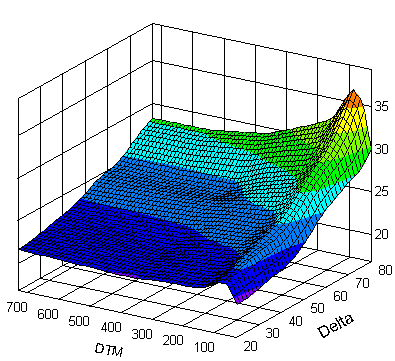Announcing the new options course
Most of my readers know about the Art and Science of Trading course, but, if you don’t, it’s just about the best education in technical analysis that’s available, and it really is completely free. (If you haven’t seen it, you should go check it out.) For at least a few years, I’ve had plans to create an options course, and I’m excited to tell you The Art & Science of Options launches this week!

Course Outline
One of the reasons this course has taken so long to create is that I was looking for the sweet spot in terms of depth and complexity. With options, it’s easy to get deeply involved in specialized concepts and mathematical detours that just don’t matter. (Until they do, and here’s part of the problem!) The other big mistake in options trading is to oversimplify, and there are many people who have built a career, for instance teaching investors at retirement age to write options, on misunderstandings and oversimplifications.
My goal was to create a course that would go in depth enough to understand what you really need to know, but also to be something you could apply pretty quickly. It’s no good if you have to take a college-level math class to think about buying a call! On the other hand, you should understand the risk and potential in any position, and understand how the position will change as the stock moves, volatility changes, and time marches forward.
These things tend to evolve over time, but ten modules are currently planned:
- Intro to options: the very basics, from what an option is to how to read options quotes to some issues you might face when trading. We’ll look at both directional and non-directional strategies, and finish up with an overview of major topic areas in the course.
- Option pricing: Starting with an intuitive approach to “what are these things worth?” we’ll look at the factors that could make an option more or less valuable, and end up looking at some of the standard price models. This is the most conceptual module planned, but it’s important. In fact, it ends with a section called “Why this matters” and it does matter a lot!
- Volatility: When we trade options, we’re really trading volatility. After this module, you’ll understand what volatility is, how it’s measured, and why you should care. Most options education falls flat here, simply telling you, for instance, to sell options that are ranked high on some scanner. We will also take the lessons of cutting-edge quant models and put them into practical lessons any trader can use to understand how volatility is likely to change.
- Basic directional strategies: How to understand the P&L of an options position, tradeoffs between different strikes and months, and how to execute swing trades with simple options positions.
- What you really need to know about the greeks: Here again, I’ve seen what, to me, are many profound mistakes in this area. It’s easy to get into very complex math that will never matter for most traders, and it’s also very easy to ignore these measures completely—many people running options services will tell you “greeks don’t matter.” They are wrong; there are things you can only understand if you understand a few key concepts. I’ll show you what you really need to know.
- Basic greeks, applied: We will revisit the basic swing trading ideas, but look at them through the position of greeks, this time. You’ll see how these measures can simplify your risk management task, and how you can use greeks to help you pick which specific options to trade. Oh, I’ll also sneak in the concept of trading option spreads in this module
- Spreads: most options traders trade spreads, and even those who don’t should understand them! We’ll look at the most common and useful spreads and see what markets favor certain structures over others.
- Selling options: we will have touched on selling earlier, but this is a module that dives deeply into writing options—why you might want to do it, how to understand the risk, and why it’s not the holy grail it’s often presented as being.
- Other strategies: We will have gotten to this point in the course with a heavy focus on just a handful of strategies and structures, and that’s not a mistake—I’m going to focus on a few trades you can make that offer the flexibility to make trades in a wide range of market conditions. But there are also a few more complex strategies to consider. Even if you’d never actually trade them, exploring trades like calendar spreads and backspreads will cement your understanding of the concepts in the course. (Oh, and someday you’ll find a perfect setup for some of these trades and will be glad you know them well!)
- Practical examples: An in-depth look at what can go right and wrong with examples drawn from recent market action.
Course format
The first module of the course will be presented in a live webinar this Thursday at 17:30. (And if you take the survey at the end of the presentation you might win a free month of MarketLife Premium!)
Subsequent modules will be presented as available, but with no more than a week between modules. (In other words, some may be presented back-to-back weeks, and some may have a week in between.) The course will only be available to MarketLife Premium or Plus subscribers, in contrast to the big, free Technical Analysis course, which is, and will always remain, free.



